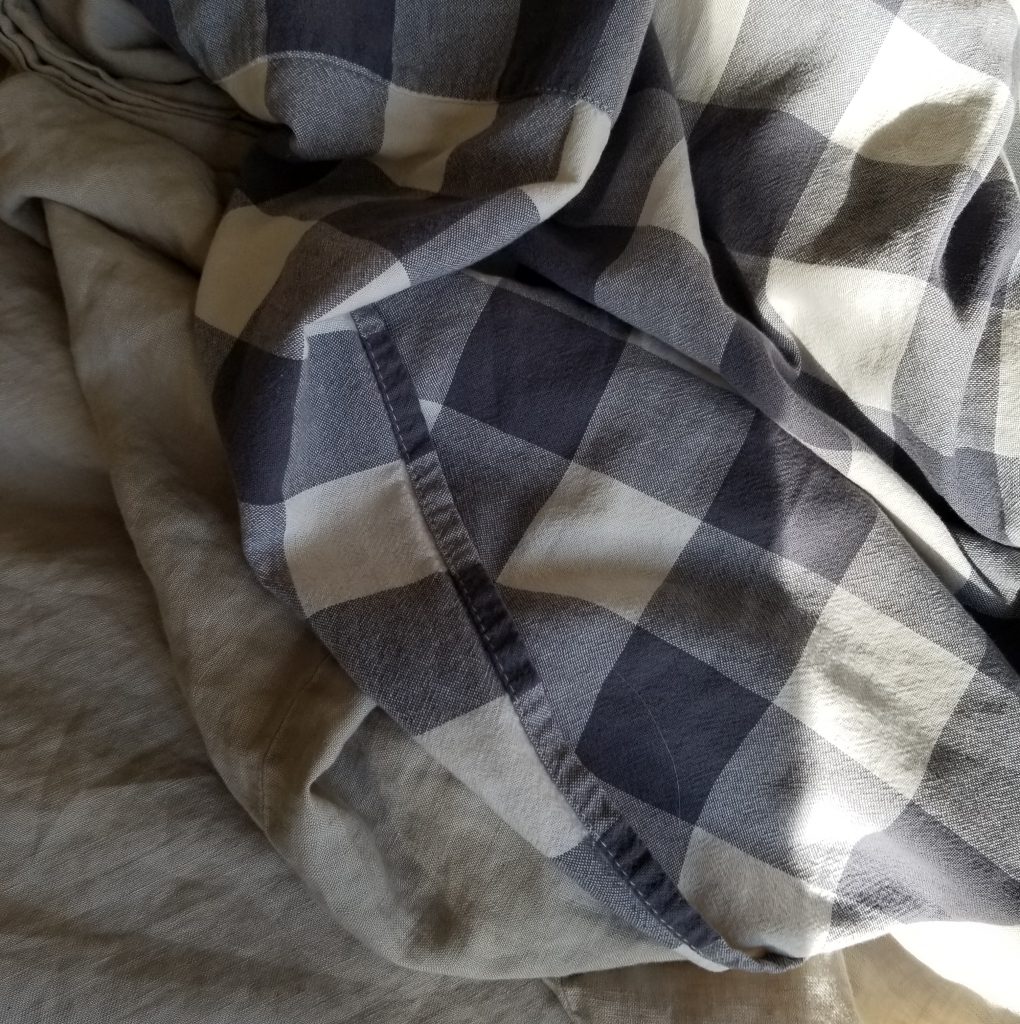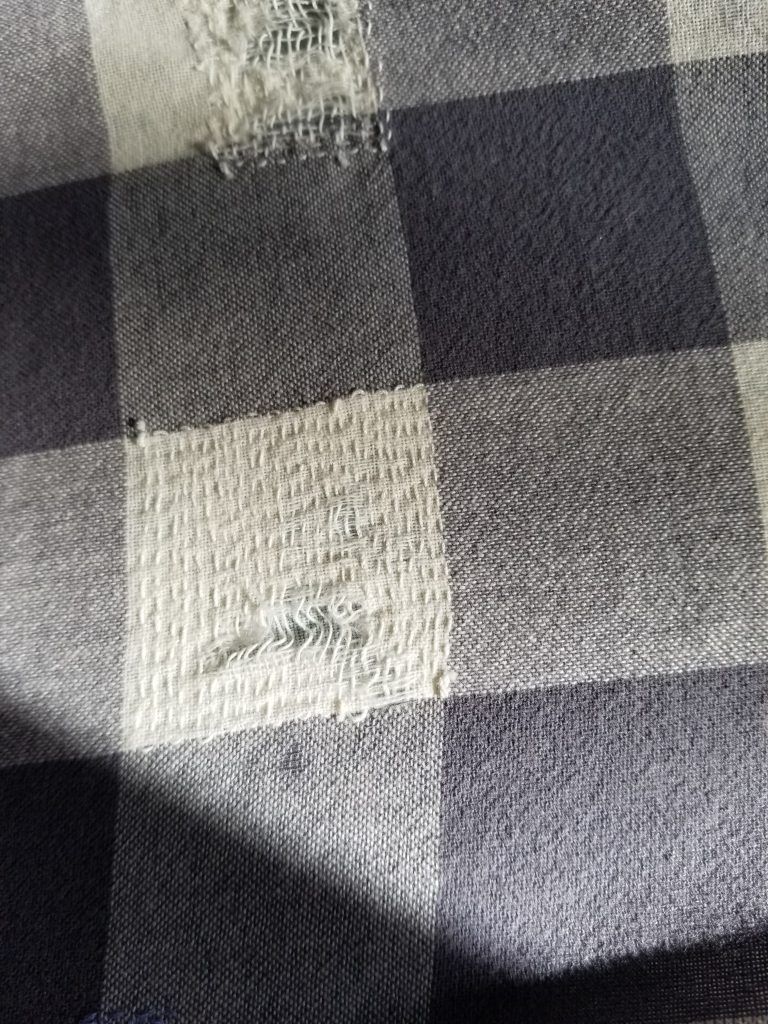
We bought it new. A hundred percent cotton. Soft flannelette. A warm layer to sleep under in the cold winter months. Light enough on its own in the summertime.
We snuggle under its softness as we drift off to sleep. It has held our dreams, both sleeping and awake.
It’s soaked up spilled tea and spilled tears.
We toss it aside when we make love. Pull it back over us when our heat cools.
It has offered me shelter since my illness began, a comfort to wrap myself in when I need to rest. When the pain is wearing me down at the end of a long day, I focus my attention on the softness of it against my skin, a sort of meditation.
It never sheltered Ruffles. He wasn’t a sleep on the bed kind of dog. But when we brought it back from the laundry, he would give it an inquisitive sniff. “Good enough?” we’d ask. “Can we put it back on the bed?” And he would give himself a shake and wander off to the kitchen to await treats, which we took as a sign of approval.
We only have one set of sheets for our bed and after five or more years of constant service, I noticed holes developing.

In the past, I would have considered using something until it was holey to be getting maximum use out of it and would have looked forward to replacing it with something new.
But now I am a mender.
The smaller holes have been darned with a soft linen thread. The larger holes have been patched with fabric from an old shirt of Alan’s that shredded beyond my skills to repair. I will check it each wash day, fixing new holes as they develop.
Alan worried that the repairs would be noticeable, would interrupt sleep. I can feel the stitches as I roll over and settle, but they are as soft as the sheet itself, their presence another layer of comfort.
If I had known that this one would become our forever sheet, I might have been a bit more careful in its choosing. Large smoky-blue gingham check is not exactly my idea of beautiful. But it was on sale. And we were in need.

But that’s how commitment works, isn’t it? It comes into your life without notice and slowly, over time becomes important.
If I had known that the short, large-nosed man with the off-kilter sense of humour would one day be my husband, I might never have gotten into the car with him that first date. But it was only a movie, after all, not a life-time.
Mending a sheet takes effort. And a fair bit of time. But before you dismiss the idea because of other commitments, maybe have a look around your town for someone who can do the repairs for you. You’ll be supporting a local business while keeping a sizeable piece of fabric out of the landfill.
And yes, it might be cheaper, monetarily, to buy a new one. But maybe you can think of the money spent as part of your charitable budget, helping to further a better kind of world to live in, or your entertainment, for the stories you’ll be able to tell about your sheet, the memories it holds and the person who mended it.





This is great! I was actually in the midst of altering a pair of thrifted linen pants when I read this. You inspired me to mend my duvet cover — several of the buttons at the bottom had ripped off and some of the button holes were torn. An hour later, it has been fully restored – with one mismatched button and a couple of denim patches. Hooray! xo
One of Peter’s shirts of which I am fond developed a tiny hole at the elbow. I bought some iron on tape, and it is good as almost new. I didn’t want it to go in the rag bag.
I patched my favourite sheet, too. There was nothing wrong with it other than the rip. Patched with an old fabric remnant from a baby outift I made for Jasmine. There is such satisfaction in repairing as opposed to purchasing!